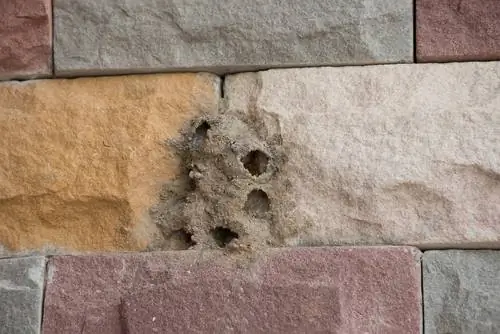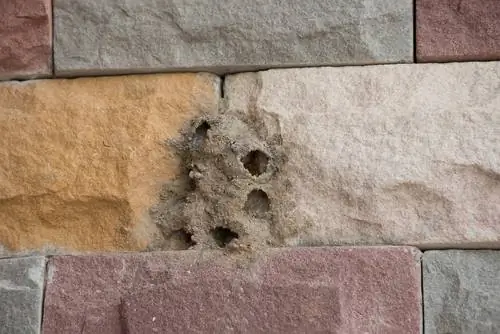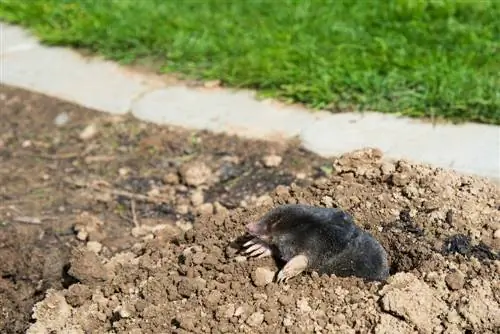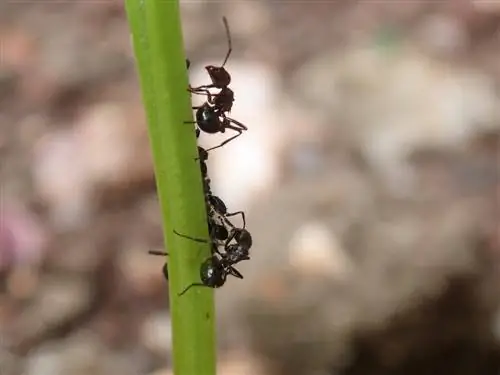- Author admin [email protected].
- Public 2023-12-16 16:46.
- Last modified 2025-01-23 11:22.
Wasps like to look for protected niches to nest. Small gaps in natural stone walls or insulation cavities are ideal breeding places for them. However, their settlement can disturb us humans. However, driving them away is not always advisable.

How can you get rid of wasps in masonry?
In order to get rid of wasps in masonry, it is important to first identify the affected wasp species. Solitary species such as clay or potter wasps can be ignored, while caution should be exercised with social wasp species such as German or common wasps. However, entrance holes should never be closed.
Problematic and unproblematic settlements
Whether wasps nesting in masonry is critical for people or the building structure depends on the respective situation. The different species of wasps that occur here require different nesting conditions and therefore settle in different types of masonry. For example, what they consider welcome shelters are:
- Gaps in natural stone walls
- Vacities between foundation masonry and external cladding
For smaller gaps between rough natural stone walls that are not at all or only partially mortared, solitary wasp species in particular should be heated. These include, for example, clay or potter wasps. In cracks in natural stone walls they find ideal space and protection conditions for their comparatively small nests, which only consist of a handful of breeding chambers.
In this case, it is best to simply wait for the breeding phase, which only lasts from spring to autumn anyway. As a rule, the stone wall does not suffer any significant damage from the nest and the few animals of a solitary, people-shy wasp should not be a major nuisance either.
The situation is different with social wasp species, especially German and common wasps. These are the species that most of us know as typical wasps because, in contrast to the large proportion of other wasp species, they seek proximity to humans. These social wasps form large colonies and therefore require more space for their nests. Since they are also so-called dark cave nesters, the cavities provided for insulation between the foundation masonry and the outer cladding of residential buildings offer them the best nesting conditions.
If wasps nest here, it's more problematic. Because if the nest is large and the wasps are disturbing it, it is difficult to get to it. The insulation material and masonry are damaged rather insignificantly and after a season the colony has disappeared. If the old nest remains in the cavity, hardly any other wasps will settle there the following year.
What you shouldn't do is close entry holes. This causes the wasps to be unnecessarily tormented and will also try to eat their way out through the insulation material - so the damage to the material tends to increase, and you may also close ventilation openings that are important for the wall construction.






